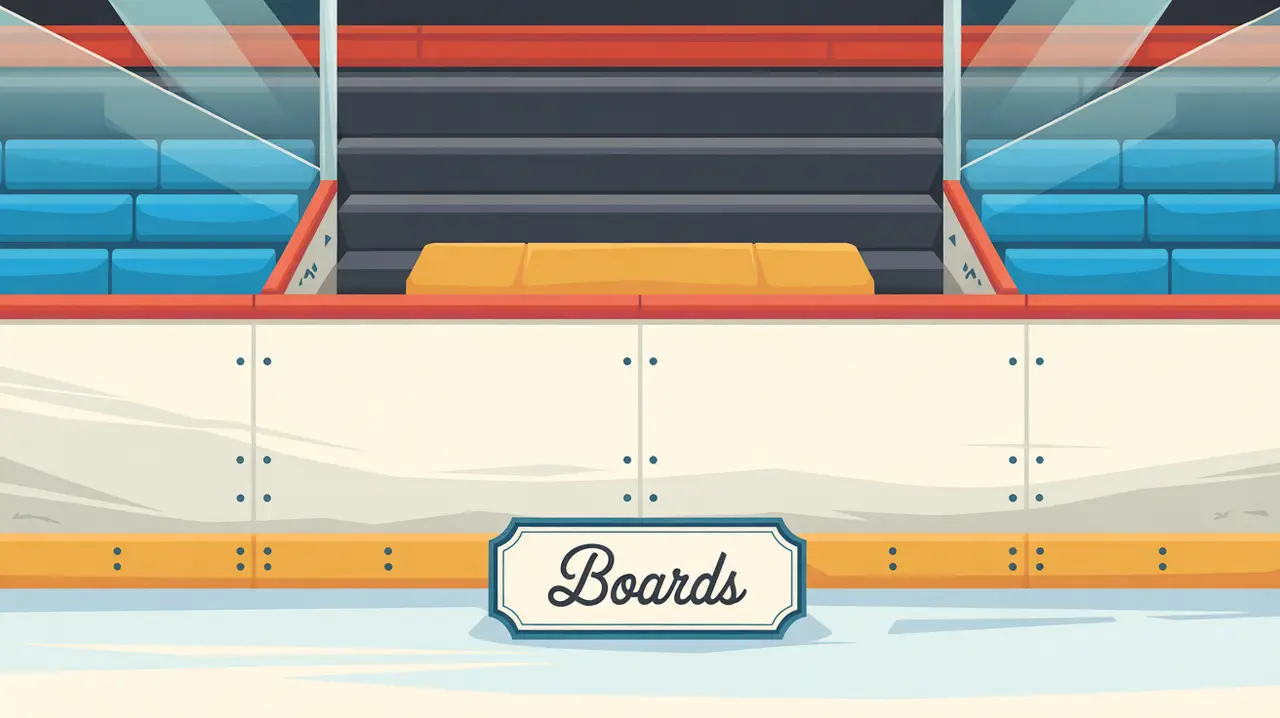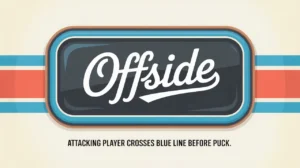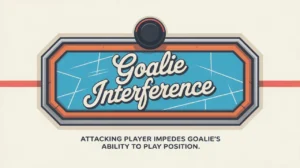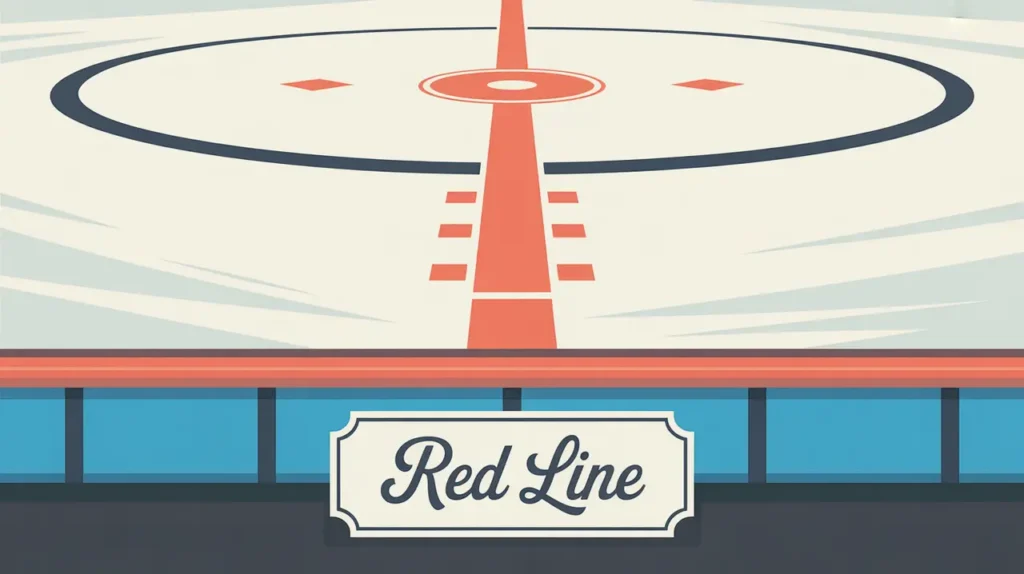Jim’s Intro to the Boards
Hi folks, Jim here, the only commentator who tried to be cool and climb over the boards to get on the ice for my exhibition tournament. Turns out that it wasn’t my skates, but my recovering elbows and knees that spent the rest of the day on ice.
What are the boards?
The boards are the solid walls surrounding the entire rink, usually made of high-density plastic and fiberglass mounted on a sturdy frame. They rise about 40 inches above the ice and are topped with Plexiglas or tempered safety glass to keep the puck in play and protect fans. Far from being just a boundary, the boards are a critical part of hockey’s geometry, strategy, and physicality. Players use them to pass, protect the puck, absorb contact, and dictate the flow of the game.
How do they work?
The boards shape play, positioning, and puck movement in several ways.
- Containment: They keep the puck in play, allowing the game to flow continuously without frequent stoppages.
- Bank Passes: Players use the boards intentionally to angle passes around defenders, especially in tight spaces or breakouts.
- Puck Protection: Players lean into the boards to shield the puck from defenders while cycling or battling.
- Checking and Physical Play: The boards are where body checks are delivered and absorbed. Good technique makes this safe and effective.
- Zone Management: On dump-ins and clears, the angle and speed off the boards affect whether the puck wraps smoothly or takes unpredictable bounces.
They’re part wall, part tool, part opponent.
How do you make good decisions with them?
Smart board play is about angles, awareness, and control.
- Use the Bank: Perfect the angle and weight of board passes to bypass defenders or spring teammates.
- Protect the Puck: Lean your body between the puck and the defender to shield it effectively.
- Check Responsibly: Deliver hits through the body, not the head or back, and keep skates low for balance.
- Read the Bounce: Know how different boards behave. Some are lively, some are dead. Adjust your play accordingly.
- Keep Your Head Up: Board battles are intense. Awareness prevents blindside hits and turnovers.
How do you master them?
Mastering the boards comes with experience and technical skill. Players learn the feel of their home rink’s boards, where pucks tend to bounce, and how to use the wall as a passing partner. Defensemen especially rely on quick bank passes under pressure. Forwards learn to cycle along the boards with patience and body control, wearing down defenses.
What does it look like when done right?
Clean board play looks composed and purposeful. Players use precise bank passes to start breakouts. Puck protection along the wall is controlled, not frantic. Hits are clean, puck battles are strategic, and transitions out of the corners happen seamlessly. It looks like the boards are part of the team’s playbook.
Commentator’s Corner
Jim’s Take
I’ve seen players treat the boards like a brick wall, just dumping and praying. The smart ones treat it like a teammate who never misses a pass.
Parent Tip
Teach players to keep their heads up near the boards. Awareness and good technique build confidence and prevent injuries.
Player Tip
Spend time practicing bank passes and puck protection against the boards. Learn how different angles create different outcomes.
A Final Thought
The boards are a boundary that doubles as a strategic asset. When you learn to use them with precision and confidence, they can open up passing lanes, protect possession, and change the game’s rhythm.









